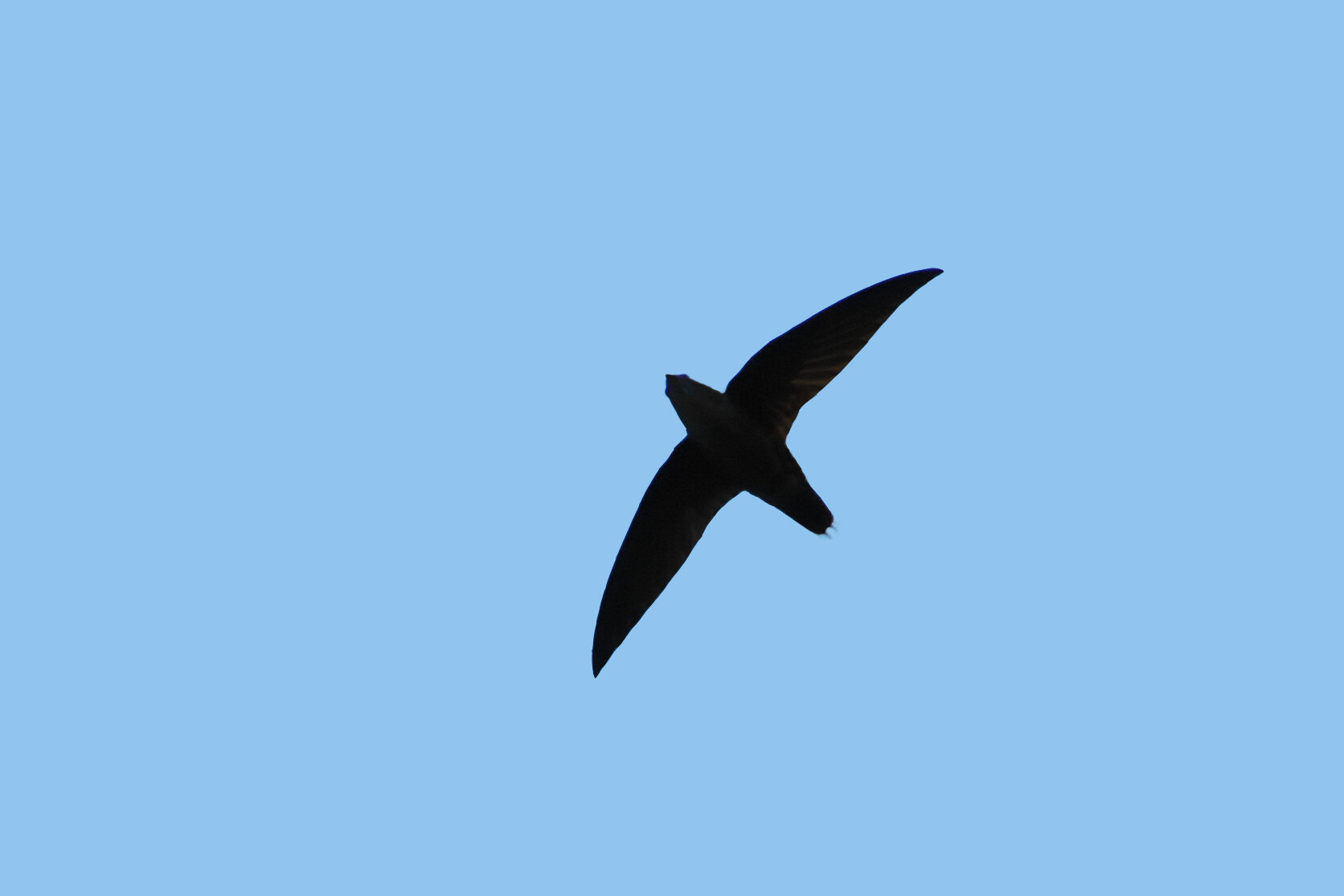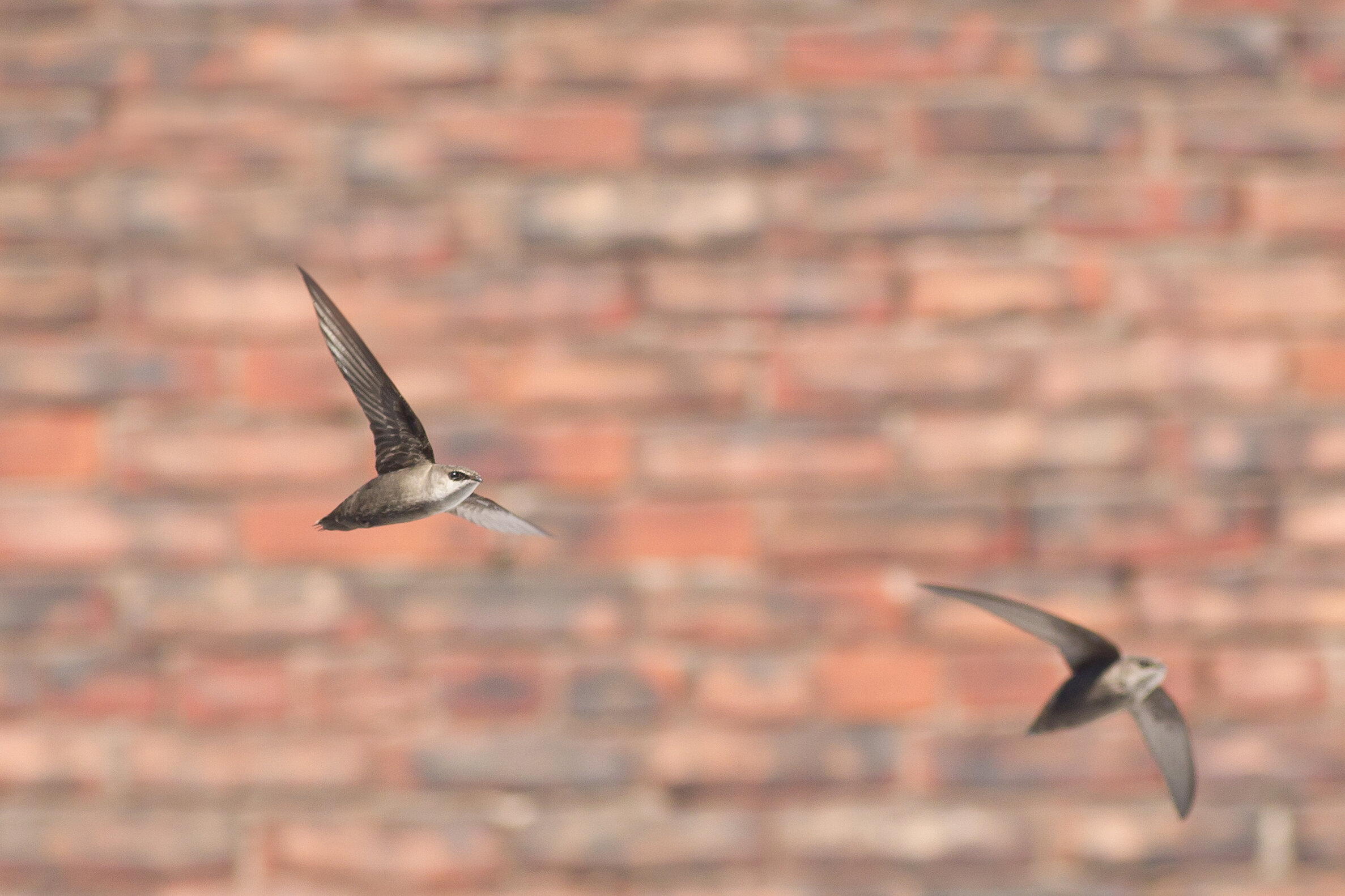(Chaetura pelagica)
Status: Threatened
This means that without some form of action, they could disappear from Canada or the entire planet.
Identification guide:
Almost always seen in flight, never perching or on the ground.
Constant twittering sound while flying.
Small, dark gray body and short, squared-off tail, giving the appearance of a “cigar on wings”.
Song at www.natureinstruct.org/dendroica
Habitat & Behaviour
The chimney swift (Chaetura pelagica) is a small, acrobatic bird with a twittering chirp-like call. It is an aerial insectivore, capturing insects while flying.
Before European settlement chimney swifts nested and roosted in cavities of large trees and in crevices, but they are now more commonly associated with chimneys or similar structures (e.g. air shafts, silos). They are able to cling to vertical surfaces, such as cavity walls, and roost at night often in huge numbers during migration.
There are several large chimneys in the Maritimes that serve as roosting sites when the swifts arrive in spring. A spectacular sight in the evening, the swifts gather and circle together by the hundreds before suddenly spiralling into the chimney. Pairs of swifts eventually disperse to suitable nesting sites. While we associate them with chimneys, an unknown portion of the population roosts and nests in the forest.
Threats
The chimney swift has suffered significant decreases over the last three decades. As in the case of other aerial insectivores, the cause of their decline is not fully understood. Possible causes are declines in food availability (flying insects), decreases in suitable chimneys (due to the addition of new metal liners), and reductions in old forest. Like all migratory birds, chimney swifts, their nests and eggs are protected.
Ways You Can Help
Tend to chimney maintenance outside the breeding season. Active nests are expected from the beginning of June to the 1st week of September, but roosting occurs from early May to late September.
Conserve structures that are used as nesting or roosting sites. Swifts return faithfully.
Leave standing big dead trees in your woodlot.
Report possible roost and nest sites to Bird Studies Canada (marswifts@birdscanada.org).
This project was undertaken with the financial support of Environment Canada.
References: Cink and Collins 2002 in The Birds of North America Online; COSEWIC 2007.
To find out more about Species at Risk conservation, contact our Conservation Manager, Carli Le Roux, below
or by calling (506) 457-2398.



